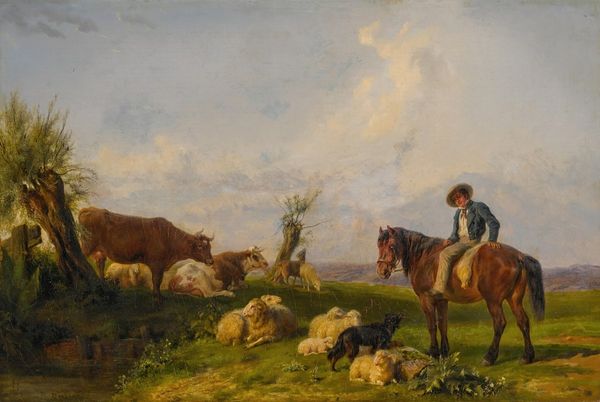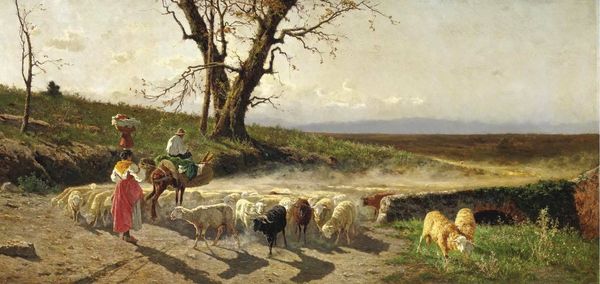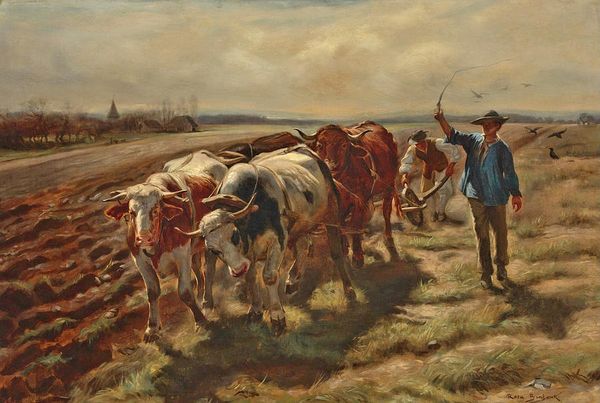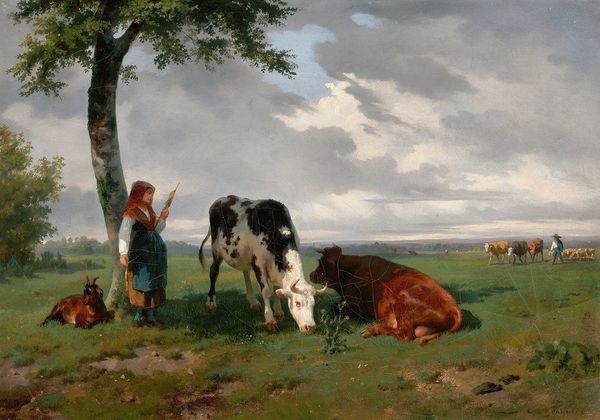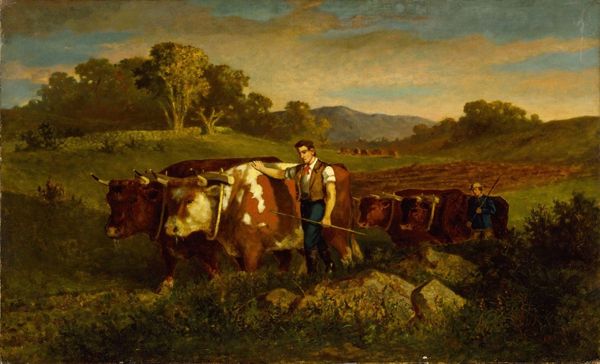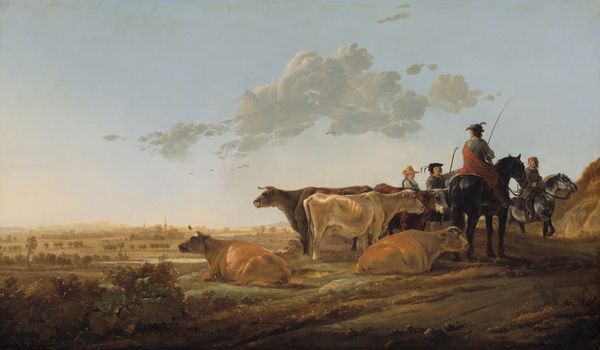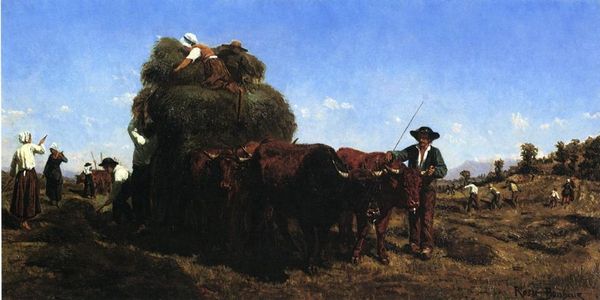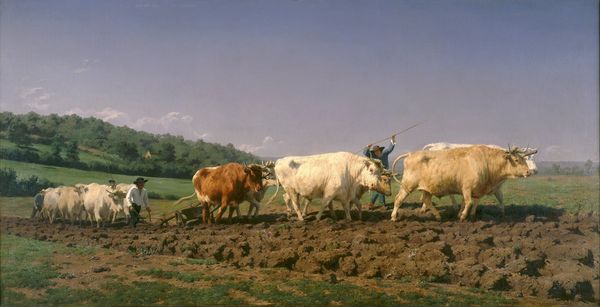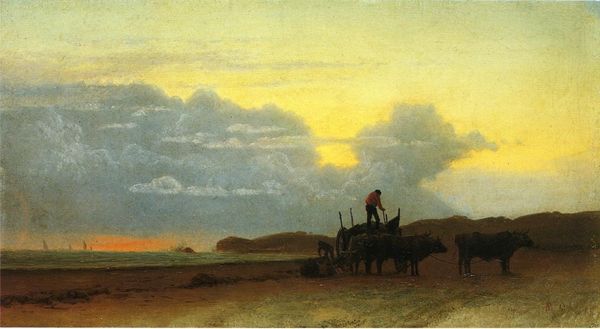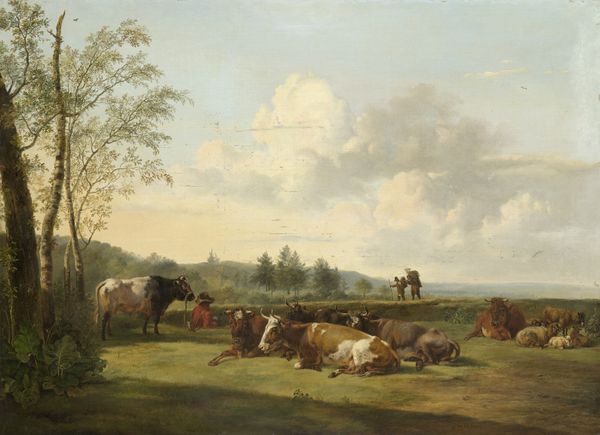
Copyright: Public domain
Curator: Well, this painting certainly evokes a sense of quiet, rural life. There’s a certain stillness to it despite the implied movement. Editor: Indeed. We’re looking at Rosa Bonheur’s "Going to Market," painted in 1851. It’s an oil painting. Notice how Bonheur employs the classic landscape compositional devices. The gaze is gently drawn from the bottom right foreground diagonally through the middle ground. Curator: And consider the use of light. It softly illuminates the oxen and figures, yet it doesn’t overly dramatize them, does it? It diffuses the color so everything blends very softly in shades of tans and greens. Editor: Quite so. It creates a scene of Romantic realism—elevating these figures working within an agrarian lifestyle while realistically capturing their lives in that same visual language. One could read the scene as a representation of harmony between man, nature, and labor. Curator: Though there’s a certain romantic idealization, isn’t there? The setting is somewhat softened. I wonder about the politics behind this depiction and who the artist imagined would view the work. Consider also, this painter pushed the conventions and boundaries around academic art; in her day, women rarely took on the visual vocabulary that had always been exclusively handled by male painters. Editor: Exactly! Remember that, even though genre scenes like this were becoming popular, they weren’t necessarily deemed as important as historical or religious paintings by institutions of that day. Bonheur achieved both significant academic fame while still working within a style considered 'beneath' the classic style. Curator: How might the figures themselves experience or internalize a sense of place or identity through their work? The men appear almost secondary to the oxen and other farm animals who do all the heavy work in this scene. Editor: You raise a good point, that they all together form part of a working whole is certainly an interesting lens. The animals are of such a presence here that they almost seem central figures with just as much import. Curator: And consider Bonheur's deliberate decision to center the oxen as figures to be reckoned with in visual terms, rather than simply objects within a backdrop. They each have their own distinct musculature, hair colorings, even horn sizes and shapes! She certainly elevates these working animals in that way. Editor: This deep dive really gave me an even greater appreciation for Bonheur's perspective and insight. Curator: And me for the under-examined power structures within what I had casually labeled as simple rustic scene!
Comments
No comments
Be the first to comment and join the conversation on the ultimate creative platform.

